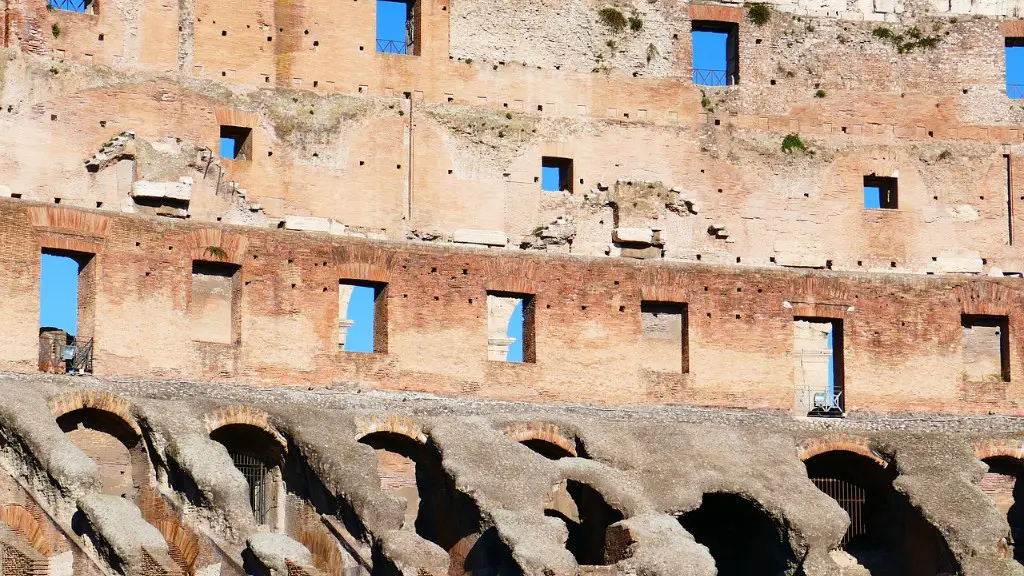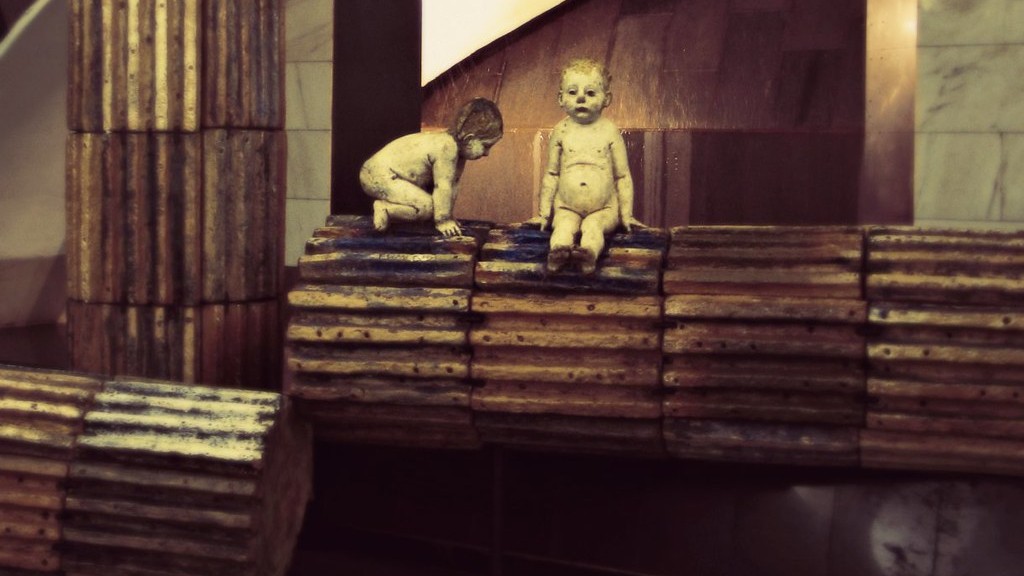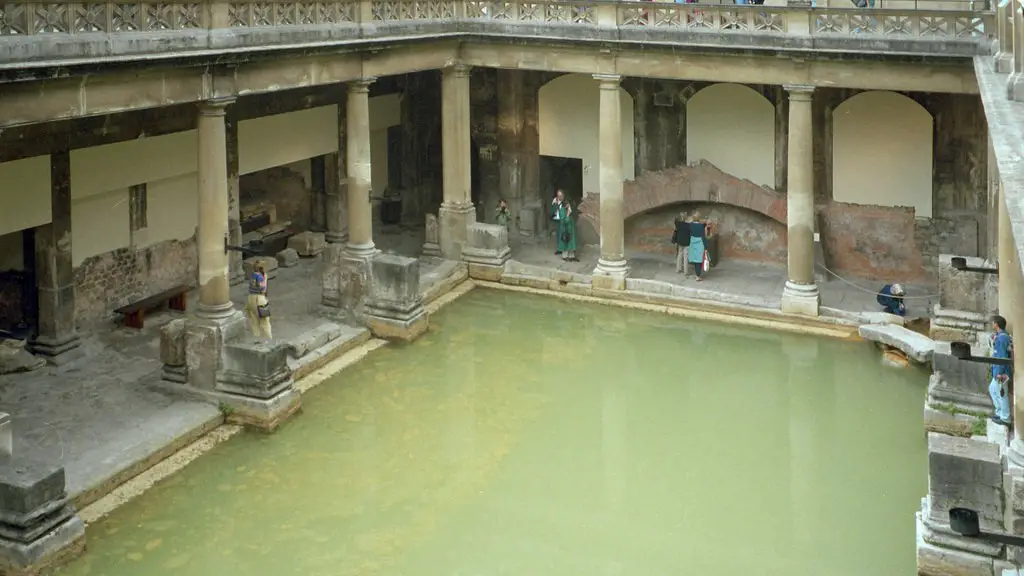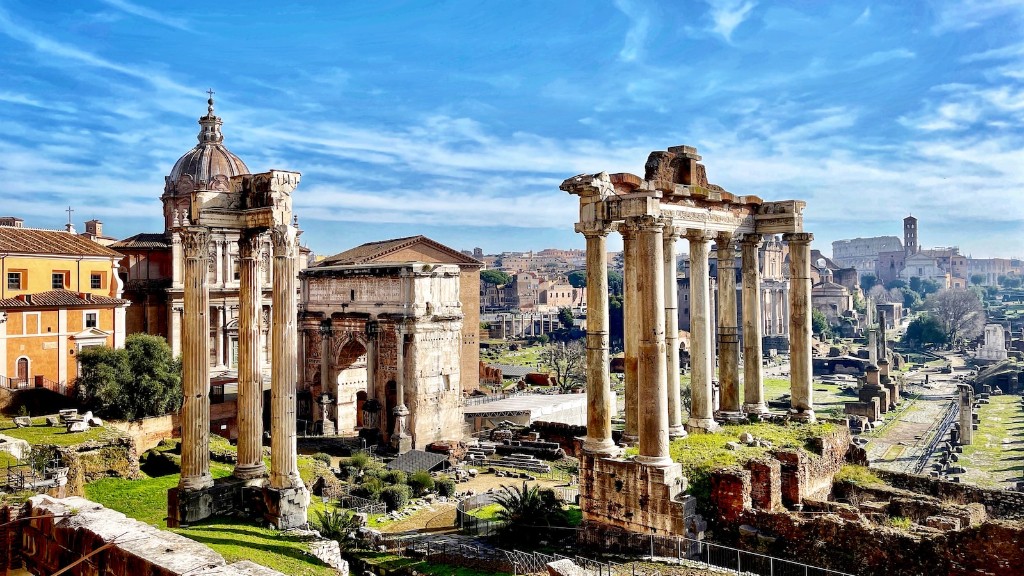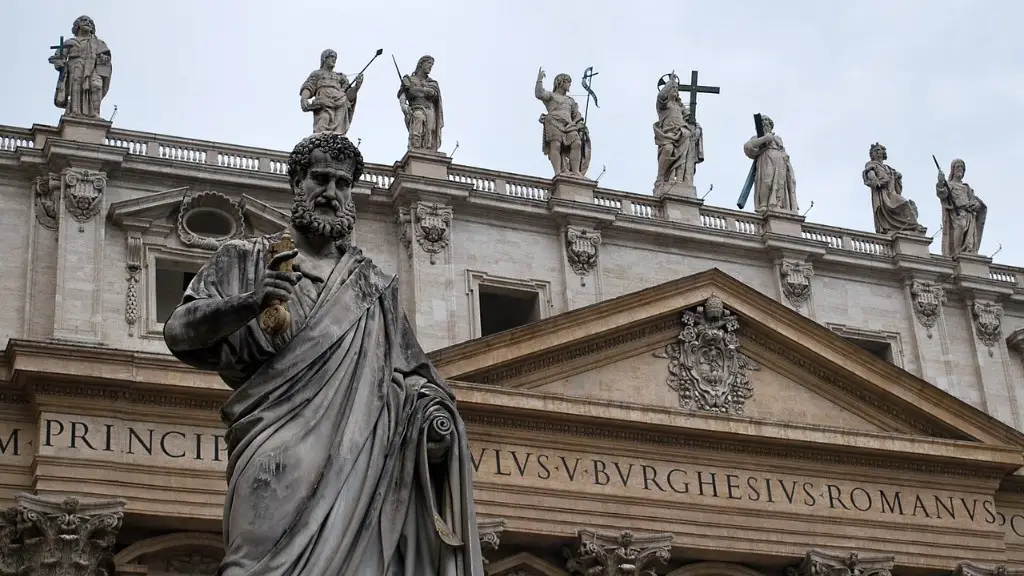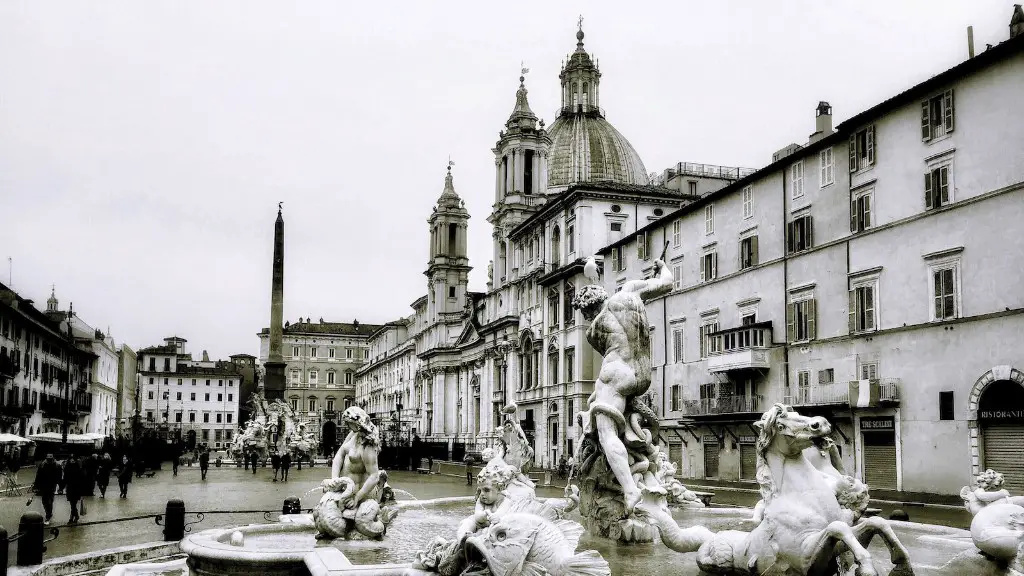Throughout the centuries, Italy has been one of the most influential and culturally rich countries in the world. It is no surprise, then, that it forms the historical and cultural heart of European civilization. At its very heart lies the ancient city of Rome, the eternal capital of a people who have seen much of the world and have left a lasting impression. Here lies the story of where ancient Rome is in the world.
Rome is located in the central-western portion of the Italian peninsula, the region of Italy known as Lazio. It is the capital of Italy and the largest city in the country, covering an area of over 1,200 square kilometers. Rome is situated between the Tyrrhenian Sea and the Apennine Mountains and is a city of great antiquity can said to be one of the oldest continuously inhabited urban centers in the world. According to archaeological records, its foundation dates back to 753 BC.
Today, Rome is a modern and vibrant city as well as a center of European culture and art. It has been designated a UNESCO World Heritage Site and is home to many of the great works of art, architecture and literature of the ancient world. The city is passionate and passionate about its grandiose history, while also keenly embracing the modern world, providing a truly remarkable experience for visitors. The atmosphere is filled with a sense of nostalgia and wonder, as the shadows of gladiators, gods and emperors seemed to be inescapable.
The city of Rome is an open-air museum and an unparalleled testimony to the great empires of the past. It houses architectural marvels such as the Colosseum, the Pantheon, the Roman Forum and Palatine Hill, glittering baroque churches, powerful ancient ruins and interesting underground crypts and catacombs. From the Spanish Steps to Trevi Fountain, from the Vatican to the Borghese Gardens, Roman monuments and landmarks are a reminder that this is the place where the Roman Empire lived and where the Western World got its start.
Rome is a city of many faces, and its unique charm lies in its mix of monuments and buildings, roads and squares, interspersed with fascinating bridges and cobblestone streets. The city is filled with energy and soul, offering a variety of experiences to visitors, some of which remain undiscovered. Its atmosphere is a special combination of both the traditional and the new, where old traditions merge with the contemporary outlook.
The city of Rome is an amazing place to explore, and it has something to offer everyone. It is a city full of surprises and discoveries, one which captivates the visitors with its fascinating history and culture, magnificent architecture, inspiring art, and irresistible cuisine. Whether you visit Rome to admire the many historical monuments, to taste the local cuisine, or to enjoy the quaint atmosphere and lively street musicians, you are sure to be pleasantly amazed by this stunning city and the people who inhabit it.
Historical Legacy of Ancient Rome
One of the major legacies of the city is its vast political, social and military influence, which can still be seen in many countries around the world. Centuries have gone by, but ancient Rome and its legacy still hold a deep regard in the hearts of many and its influence continues to be felt in the 21st century. Ancient Rome was the birthplace of democracy and its influential governmental system, wherein a variety of powerful politicians and distinguished military leaders shaped the world in new and exciting ways. The Roman Empire was responsible for the implementation of a new infrastructure, the encirclement of a flourishing empire and the establishment of efficient networks of trade and communication.
The city of Rome was able to last so long throughout history thanks to its ability to never forget its roots. In the political realm, the Roman Empire was defined by its great strides in the areas of law and order, while in the realm of literature, it produced two of the most renowned writers of all time, Virgil and Cicero. In the field of engineering, the Romans achieved greatness with their many monuments, triumphal arches and aqueducts, among other impressive feats. In terms of art and architecture, Rome presented many extraordinary examples, such as the Pantheon and the Colosseum, both of which have become icons of global culture.
Many aspects of Roman life continue to influence humanity to this day, and its incredible legacy is impossible to fully comprehend. Ancient Rome was the political and cultural hub of much of the western world, and its influence is still felt throughout the world today. From language, law and literature to engineering, art and architecture, Roman influence can still be found in many countries worldwide.
Significance of Ancient Rome’s Government
The Roman Empire was the first large-scale political entity to adopt a system of government that was strongly influenced by the ideas of democracy. This system, known as the Senate and Tribunate, placed most power in the hands of the citizens and was responsible for much of the success Rome experienced during its golden age.
The Senate of Rome, composed of juries representing the different classes of Roman citizens, was responsible for electing two consuls annualy, creating laws and sending representatives to seek foreign allies. On the other hand, the Tribunate was a civilian body of citizens who could veto the proposed opinions of the Senate if they felt that those ideas violated their rights. This system was ahead of its time and was the earliest example of a system of government based on the principles of democracy.
The Roman Empire was also the first to recognize the idea of the rule of law, which states that all citizens are equal under the law. Roman law was highly organized and focused on the moral and ethical principles of justice and fairness. By recognizing the rule of law, Rome was able to create a system in which justice was not just carried out but also respected. This was very important for the development of a strong, stable political system and contributed greatly to the success of Rome.
The strength of the Roman system of government is also seen in the contributions it made to the development of modern-day democracy. Rome was the first to introduce concepts of representation, rule of law, and majority rule. Over time, these ideas have been applied to various forms of government around the world, and their influence is still felt today.
Economic Impact of Ancient Rome
The Roman Empire played a major role in the development of ancient economies, as it was responsible for organizing and standardizing trade, establishing mints, and encouraging the growth of large cities. It also had a major impact on the development of currency, with Rome having its own units of currency such as the denarius, which was adopted by many other regions. These coins were seen as a valuable form of currency throughout the empire, and provided a more efficient way of trading goods and services.
The Romans also encouraged the development of large cities, contributing to the spread of urban life. These cities attracted many people as they offered economic opportunities for those looking for work. This was also beneficial for trade, as large cities provided a pool of people to buy and sell goods. This furthered the spread of trade and commerce within the Roman Empire and established a stable economic system.
The Roman Empire also provided a stable environment for the growth of industry. Many roads, bridges, harbors, and aqueducts were built during the Roman era, which resulted in increased trade and productivity. These projects also allowed for easier transportation of goods, which furthered the development of industry. The Roman Empire also created a system of taxation, which provided a stable source of revenue for the state and allowed it to fund its military campaigns, civic works, and other projects.
The Roman Empire had an immense economic impact and contributed to the development of global trade throughout the ancient world. Its impact on the development of global trade and commerce is still felt today, and its legacy can be seen in our modern-day economy.
Architecture and Wonders of Ancient Rome
The Roman Empire was renowned for its architectural feats and architectural marvels still stand today as an enduring legacy of this great civilization. Rome was filled with numerous structures, from public buildings and monuments to private villas and places of worship. Many of these structures have now become iconic symbols of Roman beauty, culture, and power.
The Colosseum is one of the most famous structures of the Roman Empire and is an enduring symbol of the power and grandeur of Rome. The Colosseum was an incredible amphitheater that could hold up to 50,000 spectators and was used to host gladiator events, religious festivals, plays, and public executions. It was the largest amphitheatre ever built and has become an iconic symbol of the Roman Empire.
The Pantheon is another impressive structure, and it is one of the best-preserved buildings of Ancient Rome. It was originally built as a temple to the Roman gods and goddesses, but it later served as a church. The Pantheon has a huge domed roof and was built using innovative engineering and design. It is still considered one of the most iconic structures in all of Rome.
The Roman Forum was the political and social center of the city and was home to Senate meetings, elections, festivals, and military parades. It was a large and thriving public space and was filled with impressive monuments and statues. Today, the Roman Forum is considered one of the most important archaeological sites in the world and is a reminder of Rome’s significant influence on the world.
The Roman Empire was the source of some of the greatest and most iconic structures in the world. From the Colosseum to the Pantheon, from the Roman Forum to the walls of the city, the architecture of Ancient Rome has shaped and inspired the architecture of the modern world.
Continued Legacy of Ancient Rome
The legacy of Ancient Rome carries on to this day. Its political and legal systems serve as a foundation of many modern democracies and its literature, art, and architecture continue to inspire people around the world. Roman culture and traditions are still celebrated in many countries, such as Italy and France, and many of the Roman gods and goddesses have become powerful symbols of our world today.
In addition, the Latin language continues to have a profound influence on the world, as it is the foundation of many modern languages. It has also been cited as the origin point of many words, phrases, and ideas that are used in everyday conversations. From Latin’s influence on science, philosophy, and literature, it has become a language of great importance and is still studied by millions.
Moreover, the great achievements of the Roman Empire, including its engineering feats, military organization, and its legal and governmental systems, have been widely revered and studied by generations of historians, contributing to our current knowledge of this great civilization.
The legacy of Ancient Rome continues to live on and it is still, in many ways, the origin point of our modern world. Its legacy is evident in many aspects of our society, and its influence will continue to be felt for generations to come.
